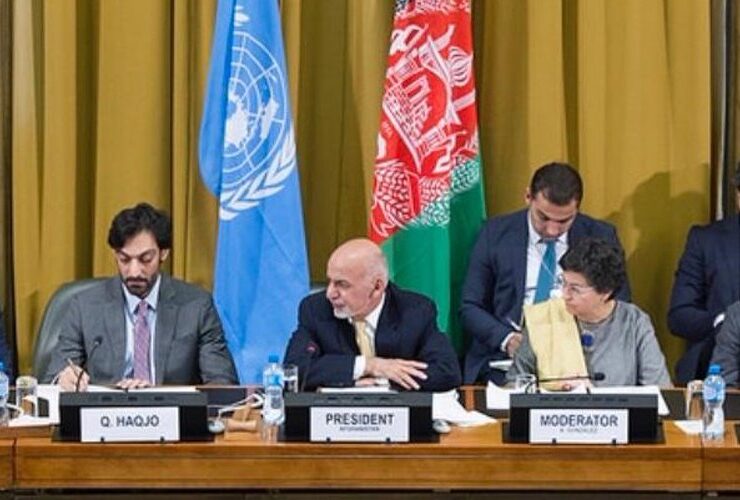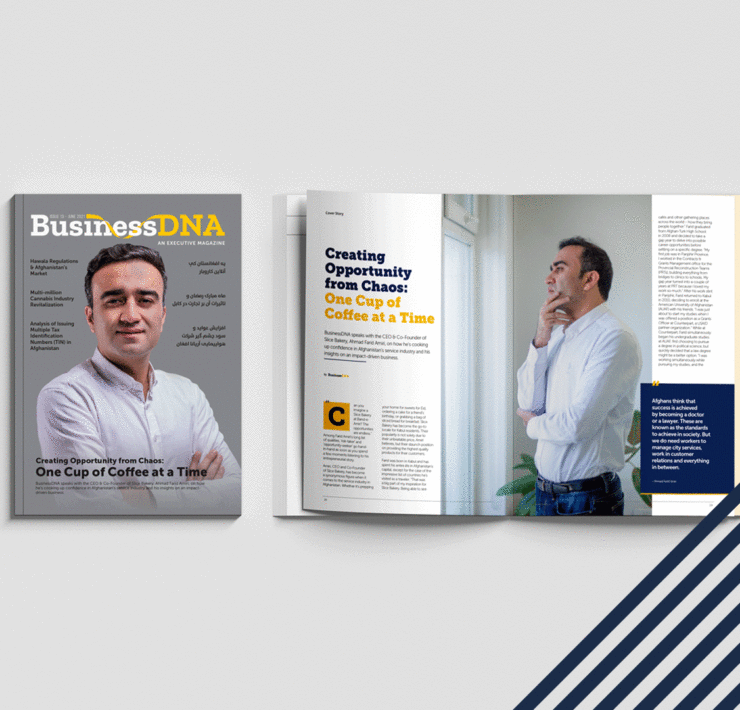GEMSTONES

By Tania Aria – Office of Economic Growth, USAID, Afghanistan
BusinessDNA 2nd Edition
A BEAUTIFUL WAY TO RE-BRAND AFGHANISTAN
THE BASICS
A gemstone is known for its three characteristics: beauty, durability, and rarity. Afghanistan is blessed with huge reserves of gemstones in different parts of its geography. USAID’s Assessment of Afghanistan Gemstone Industry Report estimates the occurrences of more than 1,400 minerals, of which more than 120 are attributed to gemstones. Mining and trading of Afghanistan’s gemstones started more than 7,000 years ago. Some of the very good examples of the fine Afghan emeralds, rubies, lapis lazuli and sapphires are found in historic collections around the world, including the British Crown Jewels, the Taj Mahal of India, and Royal Crown Jewels in Russia. For their prestige & quality, Afghanistan’s gemstones are highly demanded around the world.
Countries such as India, China, U.A.E., Thailand, Hong Kong, U.S., UK, Holland, and Switzerland are some of the top buyers. Many gemologists admire the natural superior quality of Afghan gemstones. It is said that the Afghan Panjshir emerald can compete with the world’s famous Colombian emerald and Afghan Jegdalek ruby with the world-class rubies of Burma. Afghanistan has the best quality of lapis lazuli, the ancient stone of the world found in Badakhshan. Studies show that Afghanistan is the best place to buy tourmaline due to its great quality, price, and variety of its beautiful colors. Sapphires are the other well-known stones found in different colors in the northeast of Afghanistan. The other beautiful blue color stone is called Afghanite. It was named “Afghanite” where it was discovered in the lapis lazuli mines in Afghanistan in 1968.
Spinel, jade, kunzite, aquamarine, morganite, tanzanite, granite and onyx are the other types of gems found in Afghanistan.
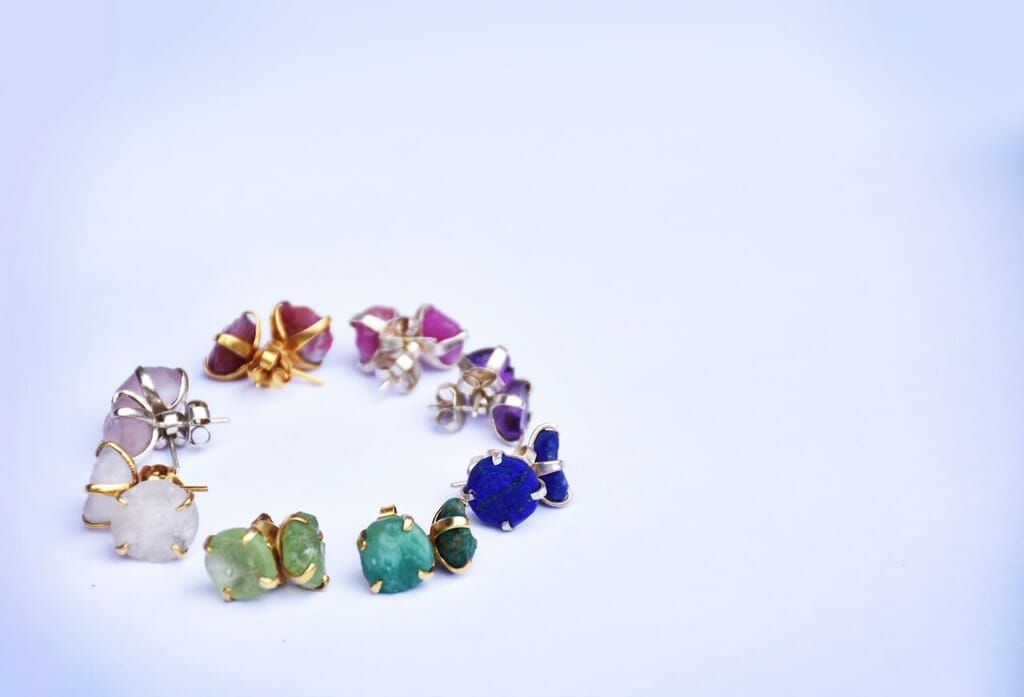
THE INDUSTRY
Gems and jewelry industry is one of the most labor-intensive in the world – China, the U.S. and India being the leading jewelry producers. For instance, in India the jewelry sector employs 4.5 million skilled and semi-skilled workers. With proper investment in the capacity of the sector, Afghanistan has huge potential for employment, particularly for women. The jewelry industry resembles the characteristics of women friendly businesses and plays a very good role in the economic empowerment of Afghan Women. The sector also falls under artisanal and small-scale industries, which do not require large investment in infrastructure.
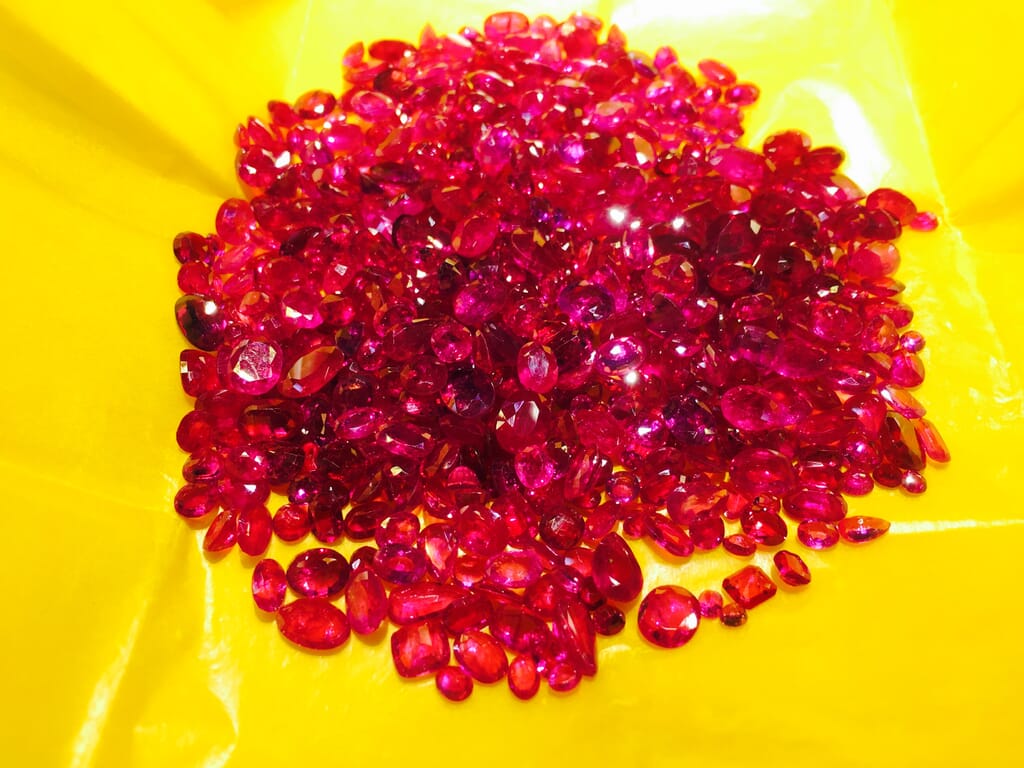
THE AFGHAN CONTEXT
Unfortunately, Afghanistan’s gemstones sector has not been developed much. Currently gemstones in Afghanistan are extracted using dynamites and outdated manual techniques that hugely compromise the quality, quantity, and price of the stones.
The gemstones sector has not had the modern technology, know-how, and human capacity necessary to create opportunities for scaling value addition within the country.
Afghanistan’s poor legislative and regulatory systems have not welcomed growth in the sector either. The complicated processes and paperwork that includes getting a mining license, a contract for extraction, permission to process the rough stones, and clearance to export has caused the enterprises to choose illegal ways of doing business. This has also been echoed by the lack of issuing mining contracts for the past three years by the government.
A businessman in the jewelry sector says it takes 16 signatures of mid-level management and two of the Minister of Mines and Petroleum to clear gemstone for export purposes.
The other major challenge is the high rate of royalty and tariff on the export of rough stones. There is 15% royalty charged by the MoMP, which is very high compared to the regional average of just 4%. Businesses also have to pay export tariff of 7-12%. This means collectively businesses pay up to 27% tax and royalty to export the gems to the international markets. Last but not least, the businesses pay varying amounts to the destination country as the import tax.
There is also no proper pricing mechanism for the precious and semi-precious stones. The reasons are lack of clear and defined valuation benchmarks for the commodities at the MoMP, illegal trade of the gemstones, and monopoly in the supply of the gemstones. The last two reasons play a defining role in inducing conflicting prices of gemstones in domestic and foreign markets.
Stones illegally smuggled to the neighboring countries are much cheaper there compared to the domestic markets, due to their evasion from paying royalties and taxes in Afghanistan. Consequently, illegally exported gemstones steals the market for legitimate businesses in the sector.
The other consequence of illegal mining is that the Afghan brand is compromised as the rough gemstones are smuggled to the neighboring countries, exported to the rest of the world, with some zero to limited value addition, concealing Afghanistan as the source of origin.
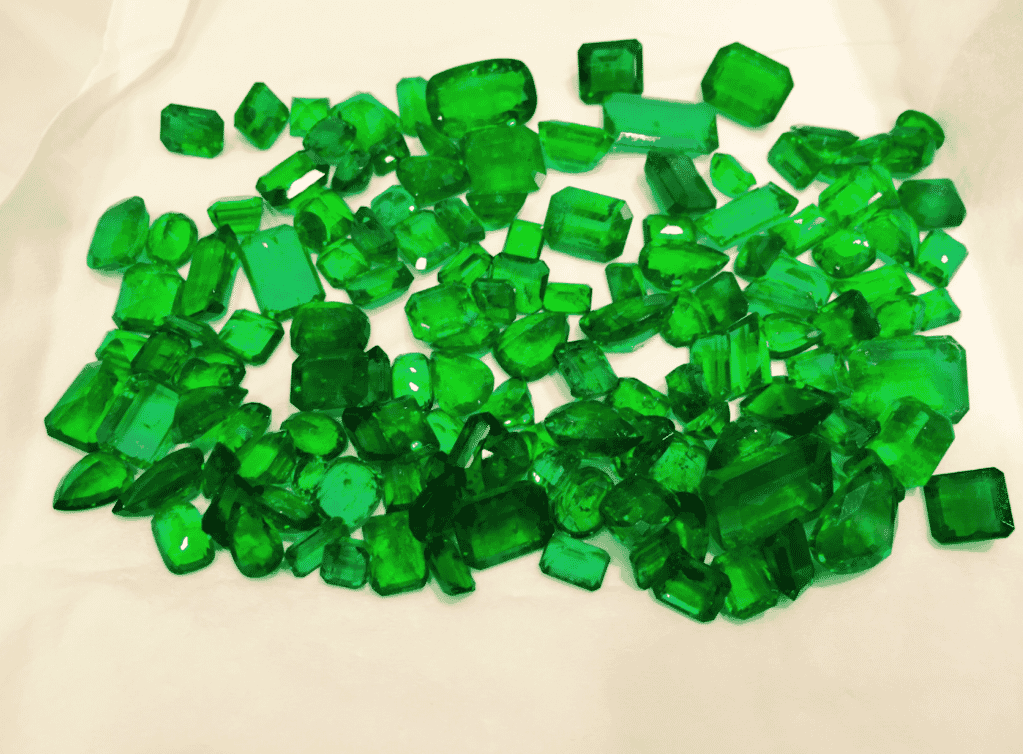
VALUE ADDITION
The gemstones sector in Afghanistan has not had the certification and needed processing facilities over the years. Without reliable certification, international buyers cannot trust originality of the gemstones, despite the global popularity of Afghan gemstones. The nature of the industry requires reliable certification of stones to avoid controversial cases, as no one wants to pay the price of an emerald for a piece of glass or crystal.
On the other hand, gems are located in the remote areas of the country with high influence by the anti-government groups which makes a very good financing source for these groups. For instance, according to a report by United States Institute of Peace (USIP), Taliban trade rubies in Jegdalek area and use the proceeds to finance their activities.

WAYS FORWARD
Below are a number of measures that the private and public sector players can take to unleash the sector’s potential for investment.
The private sector must improve the quality of Afghan gemstones by improving the 4 fundamental Cs, a universal measure of assessing value and rarity of gemstones.
1. Color is the most important factor in valuation of a gemstone. Afghanistan is blessed with natural beauty and variety of colored stones, ranging in different degrees of pureness. Deploying standard extraction technologies and techniques is essential to get the right combination of quantity, quality, and color range.
2. Clarity of a gemstone is directly linked to its rarity. This means clarity refers to a gemstone’s relative freedom from inclusions or blemishes within the stone. The fewer inclusions or blemishes, the rarer the gemstone. Each type of gemstone has different standards of clarity. For instance, there are gemstones that are free of inclusions like tanzanite, some gemstones normally contain inclusions within them like rubies and sapphires, and some gemstones always have inclusions like emeralds and tourmalines.
Use of dynamites increases the inclusions in the gemstones, while proper extraction plays a huge role in the clarity of stones.
3. Carat Weight is the unit of measuring the size of a gemstone. One carat is equal to approximately 0.2 grams. The larger the stone, the rarer it is, the higher its price!
4. Cut indicates the shape and the design of a gemstone. Stones are cut into variety of shapes, such as round, oval, emerald, pear, and diamond. When all other factors are even (color, clarity, and carat weight), a better-cut gem will be more valuable.
Afghanistan definitely needs more capacity development in cutting of the gemstone. Better cut means broader markets!
The private sector should improve their capacity in cutting and polishing the stones. This means they should equip themselves with the modern machinery, which is very much affordable. The mindset of traditional way of doing business should change to open the door for expansion, profitability and a variety of customers. The private sector should also train their employees and build their capacity in cutting and polishing the stones. It is the responsibility of the private sector to introduce the fine brand of Afghanistan in the jewelry markets of the world.
Private sector must recognize the opportunities they are being provided within the sector. Gemstones enterprises must adapt professional business communication and marketing approaches, particularly in international markets, to build long-term business relationship with key buyers.
Enough of traditional way of doing business! It’s time to process local, go global, and compete with quality. For instance, Afghan participants in international exhibitions & trade shows should not just focus on clearing stock and making short-term sales. But rather, focus on making business-to-business relationships and partnerships that last much longer than a day or two.
The government and private sector should also invest in building the industry in the long term by establishing specific gem cutting, polishing and jewelry making institutes with different courses.
Fortunately, the government has recently developed a National Export Strategy for the Precious Stones and Jewelry, providing an encouraging step towards exports of gemstones.
Finally, the government should provide good incentives for the private sector to formalize their businesses. This requires easing and simplifying complicated processes of getting licenses, contracts, and export clearance. Such incentives should encourage the private sector to do legal business, create jobs and be a source of revenue generation for the government in the long run. It should also help in penetrating the global market with a regular supply. For example, a tax holiday or discount for legitimate businesses could be a very good way to encourage illegal businesses to join the formal sector and increase domestic production in the country.
Improved value chain of gemstones can particularly empower women from villages to the cities. These measures can ultimately help rebrand Afghanistan, develop the sector, and contribute to the economic growth of the country.

WHAT TO DO?




